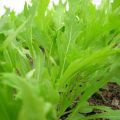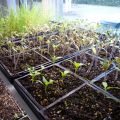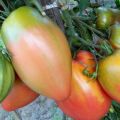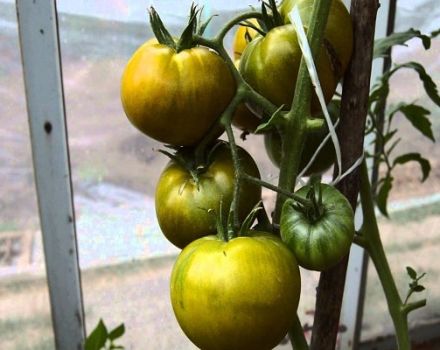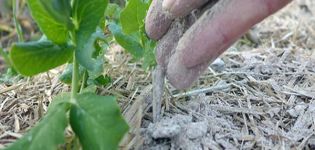Description of the Japanese tomato variety and its characteristics
Experts who know a lot about tomato cultivation argue that Japanese tomato does not cause any difficulties when growing, even for beginners. Varietal seeds of this tomato are in many collections of amateur enthusiasts, however, seed farms do not multiply this seed.
The Japanese woman has quite a few advantages:
- can be planted both in the open field and in greenhouses;
- high quality seeds and a high percentage of seedlings;
- Seedlings from selected seed are resistant to plant diseases;
- the fruits from which the seeds are taken for sowing are grown in compliance with all agricultural machinery standards.
However, the Japanese variety also has some disadvantages:
- you can buy seeds only in some tomato collectors;
- the seeds are expensive (for 10 seeds you will have to pay about 100 rubles).
Features of the variety
Giving a description of the Japanese tomato, one should emphasize its high yield and the ability to bear fruit until late autumn. Where the tomatoes come from - there is no reliable data, but there is a version that for the first time the variety began to be grown in the city of Bogorodsk. Why this seemingly family variety, grown in the Nizhny Novgorod region, has such a strange name is also unknown.

The Japanese woman is a hybrid crop that was supposed to be grown in greenhouse conditions, however, today it is also planted in open ground. The characteristic of the variety is as follows:
- unlimited stem growth (up to 2 m);
- the need for pinching and garter;
- plant formation into 1 or 2 stems;
- recommended for growing in greenhouses;
- in open ground can be planted in the southern regions;
- mid-early tomato (when planting seedlings in May, in July you can already harvest ripe fruits);
- the bush is slender, not too spreading, the leaves are dark green, medium-sized;
- simple brush (up to 5 tomatoes);
- fruits are heart-shaped and have a pointed nose;
- the average weight of the fetus is 300-350 g;
- mature tomatoes are red with a raspberry tint, they are sweet in taste, as they contain sucrose;
- thin skin has a high density, so the fruits are well preserved in salads;
- tomatoes contain many nutrients;
- the variety is suitable for use raw, as well as for making juices, sauces, soups.

Growing specifics
It is recommended to sow Japanese tomato seeds in the second half of February. Two months later, the seedlings are planted in the ground. The cultivation of this variety of tomatoes is carried out in several stages.
Sowing seeds
In order for tomato seeds to "wake up", their growth should be stimulated with a special solution.
Important! Planting material should be pickled before sowing. This will help avoid diseases of the plants.The most effective dressing with aloe juice, in which the seeds are soaked. To prepare the juice, take the lower leaves, wrap them in cloth and keep them in the refrigerator for 1-2 weeks. After the leaves are crushed to the state of gruel and squeezed out the juice. The seeds are soaked for 15-18 hours. They are not washed before sowing or germination.
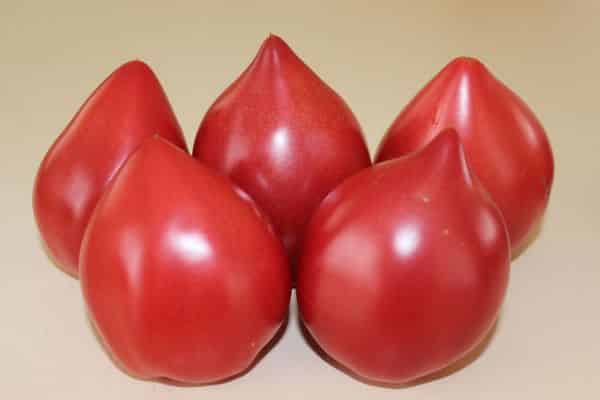
Sow tomatoes into loosened soil, which should be slightly moistened. Sowing depth - 2 cm, it is better to sow all seeds in small separate pots. From above, the ground is covered with a snow layer. When melted, the snow will saturate the ground with melt water. This will speed up seed germination. After the pots are placed in a warm place, after putting on plastic bags. The first shoots can be seen in a few days. The sprouts will need a lot of light and a temperature of + 14-16 ° C. After the seedlings get a little stronger (7–10 days), the temperature should be + 18–23 ° С. Moisturize the soil as it dries.
In order for the seedlings to be productive, they need to be fed: 2-3 top dressing with a mineral fertilizer solution.
Planting tomatoes
The planting rate of a Japanese woman is 4 shoots / 1 m². After the planted seedlings, you need to look after as follows:
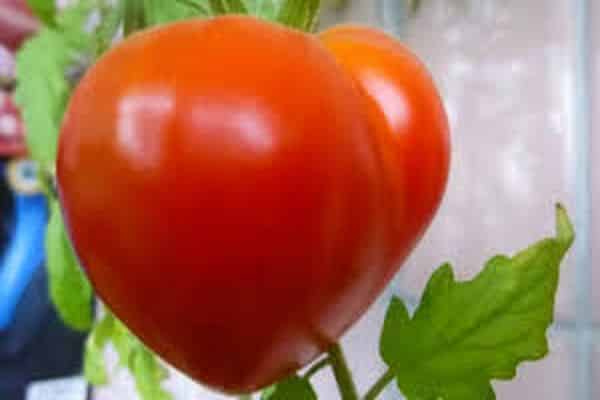
- mulch the soil;
- provide watering as needed;
- ventilate the greenhouse every day;
- feed the plants once every 2 weeks;
- remove stepchildren to form 1 or 2 stems;
- when forming fruits, remove the leaves on the brush;
- pin tops in July-August depending on the climate.
A variety of high-yielding tomato Japanese universal. Even inexperienced growers can grow such tomatoes. After harvesting, you can stock up on seeds from your own grown fruits. This will make it possible not to spend money on the purchase of seeds next year.

